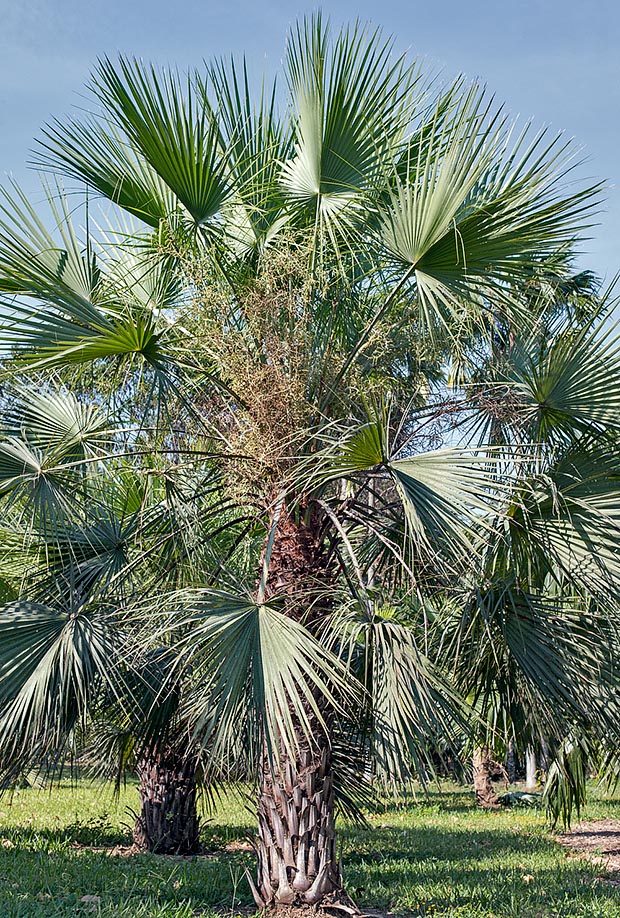Family : Arecaceae

Text © Pietro Puccio

English translation by Mario Beltramini
The species is native to the arid zones of western Mexico (Durango, Sinaloa and Sonora), where it grows in the open forests on rocky soils, often near to small water streams, up to about 1300 m of altitude.
The genus is dedicated to the Danish astronomer Tycho Brahe (1546-1601), the specific name is the Latin adjective “aculeatus, a, um” = aculeate, with reference to the stings present at the margins of the petiole.
Common names: aculeata fan palm, hesper palm, Sinaloa hesper palm (English); palmilla, ta’aco, tajcù (Mexico).

Under risk due to the anthropic pressure in the arid zones of western Mexico, Brahea aculeata is a contained sized species, little demanding, that would deserve a better horticultural diffusion © Giuseppe Mazza
It reproduces by seed, placed in draining loam maintained slightly humid, that germinates with bottom heat in 1-3 months.
Palm of contained size, quite rare in cultivation in spite of the undoubted ornamental characteristics, particularly suitable for rocky gardens of desert type, cultivable in the tropical, subtropical and warm temperate zones, where it seems that can resist dry to temperatures up to about -6 °C for a very short period. Requires full sun and excellent drainage, for the rest it adapts to poor soils, alkaline, and may bear long periods of drought, but takes advantage of regular waterings, especially in the juvenile stage, in the zones characterized by long warm and dry summers; conversely, does not appreciate the excessively humid climates.
The leaves are widely utilized by the local populations as cover of the rural dwellings, resisting unaltered to the bad weather for various years, and for realizing cordages, artistic and of common use handicrafts, finally, the fruits are an important resource for the local fauna.
Due to the anthropic pressure to which is subject, particularly due to the intensive harvesting of the leaves, that causes serious damage up to, at times, the cutting of the meristem, with resulting in death of the plant, the species has been inscribed in the red list of the IUCN (International Union for the Conservation of Nature) as “vulnerable” (species under risk of extinction in the wild).
Synonyms: Erythea aculeata Brandegee (1905); Glaucothea aculeata (Brandegee) I.M.Johnst. (1924).
→ For general notions about ARECACEAE please click here.
